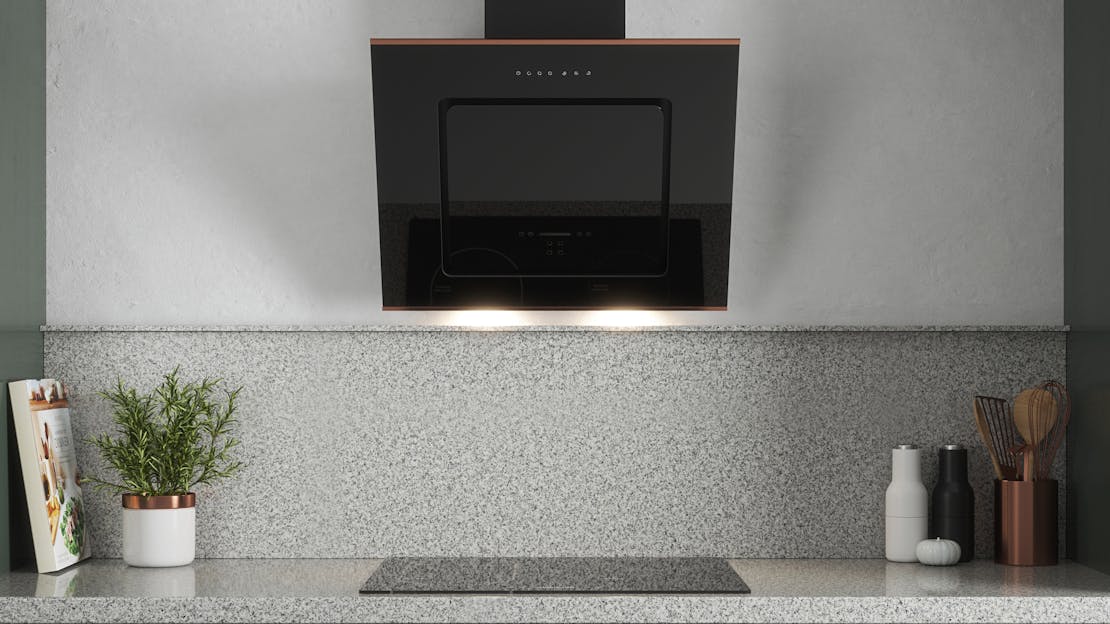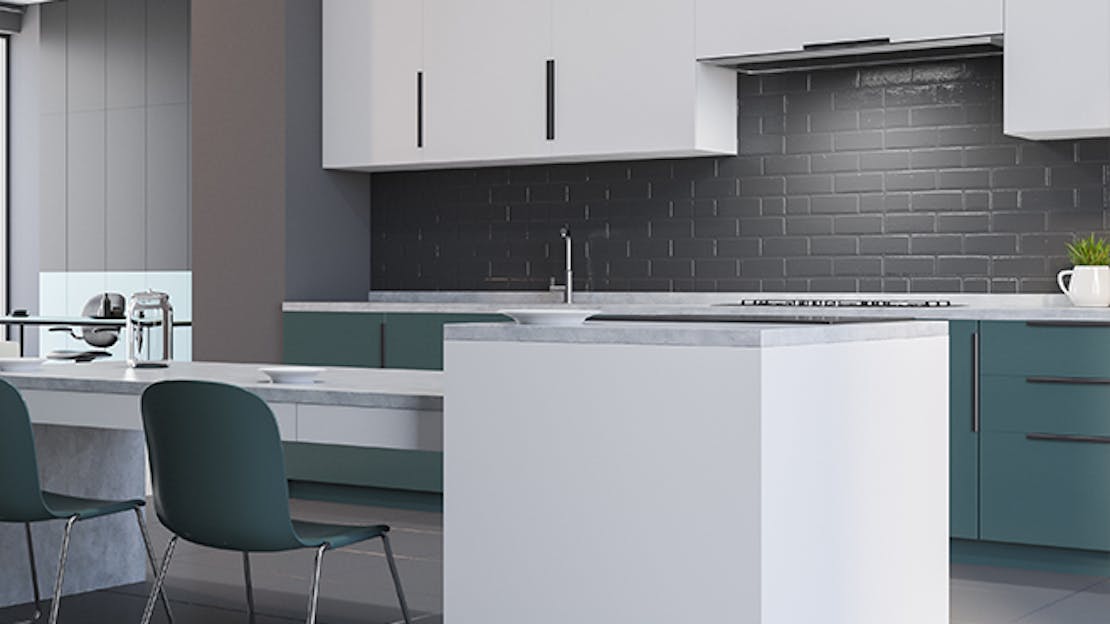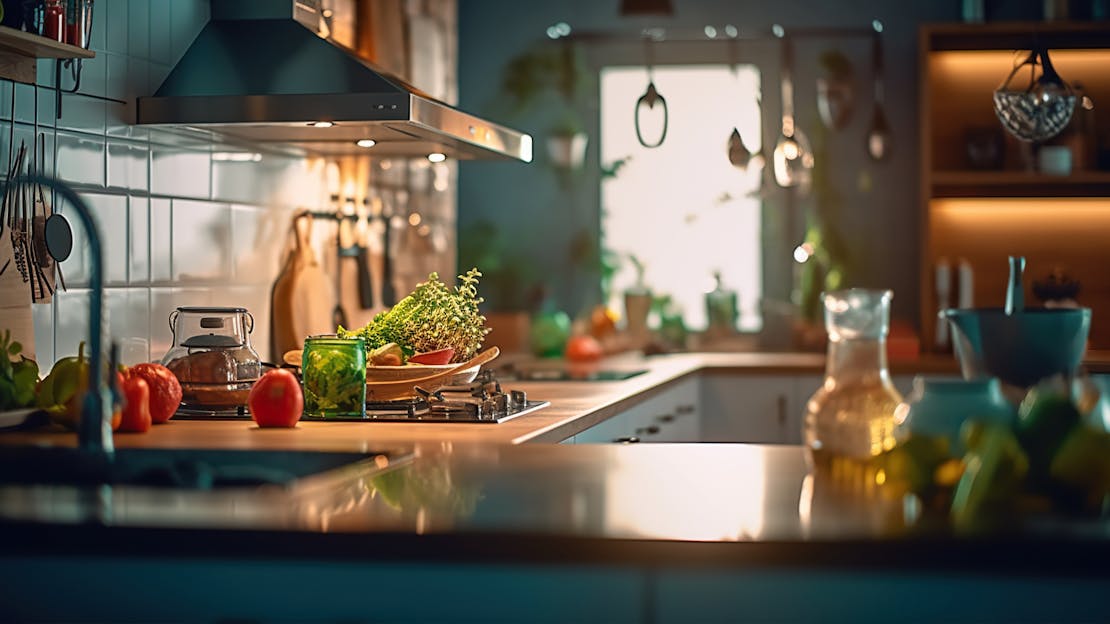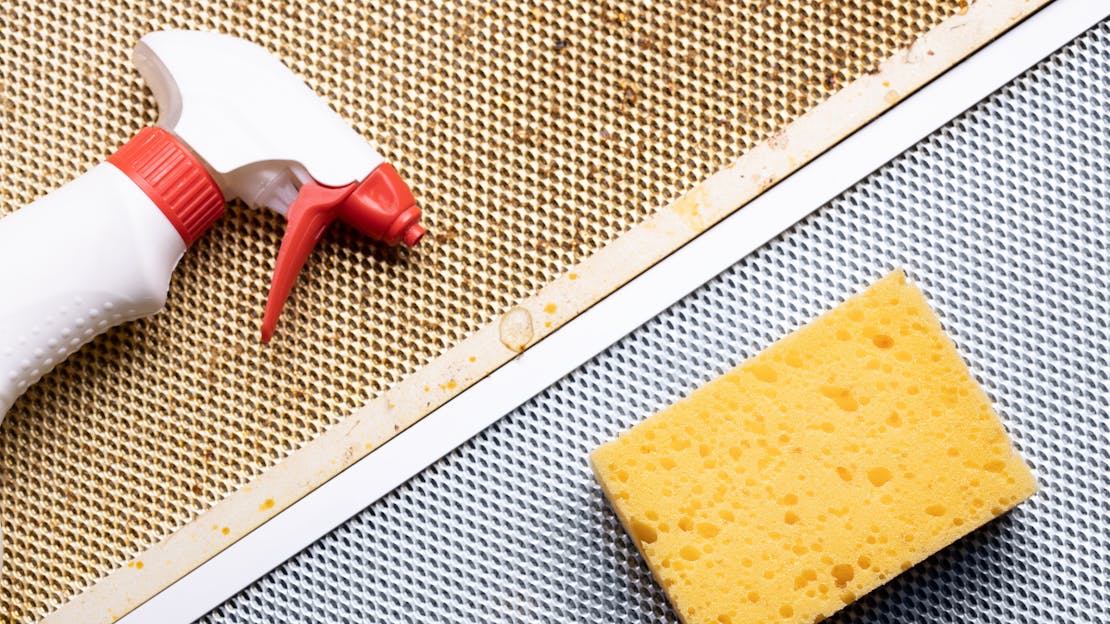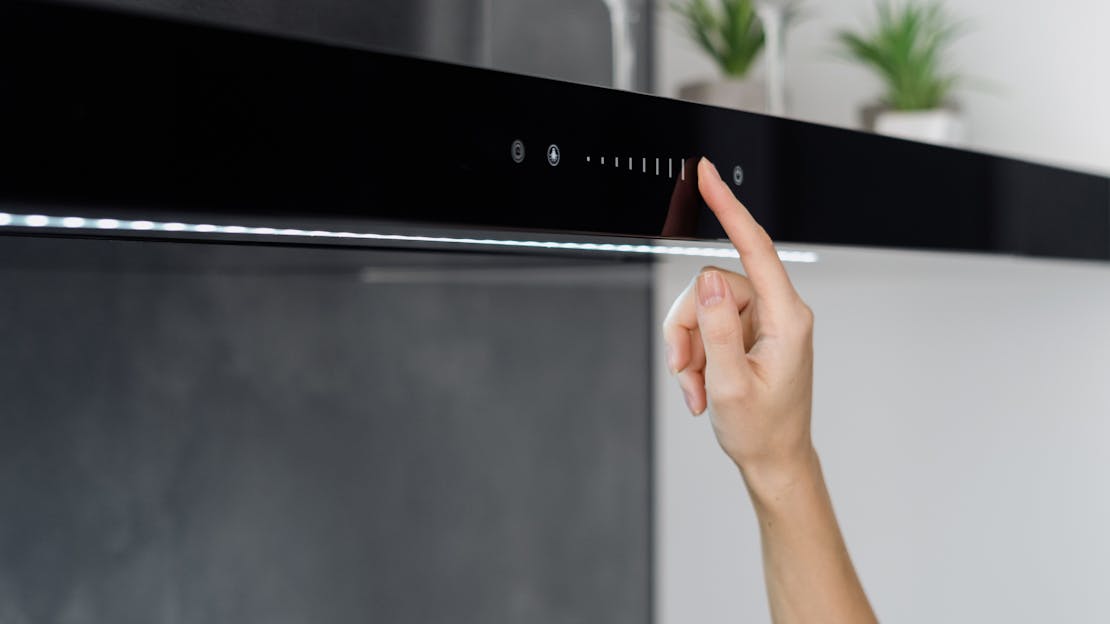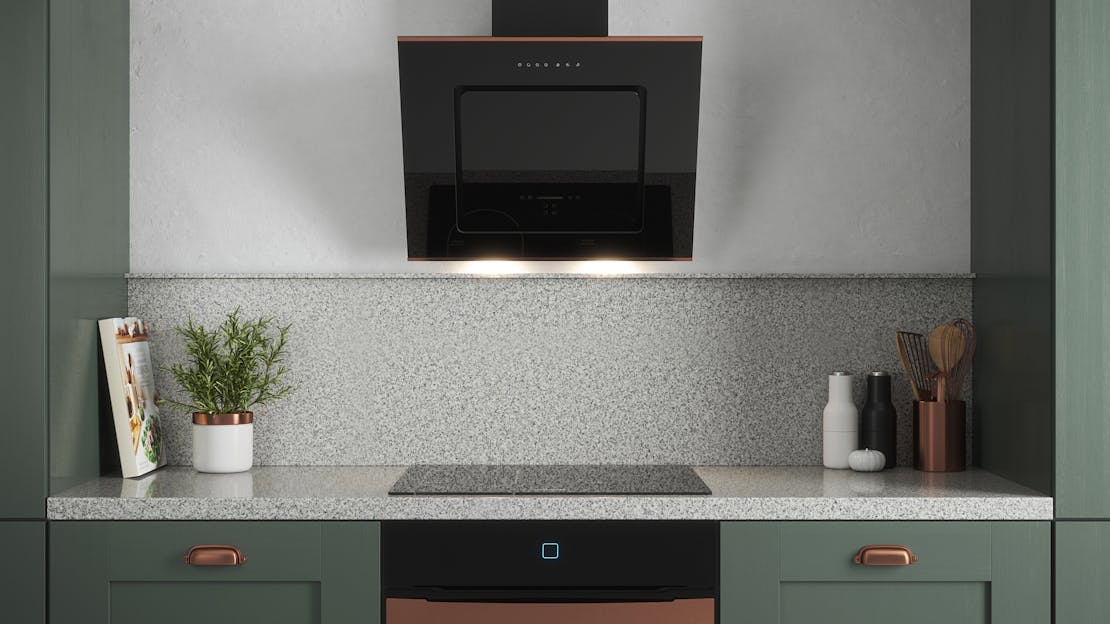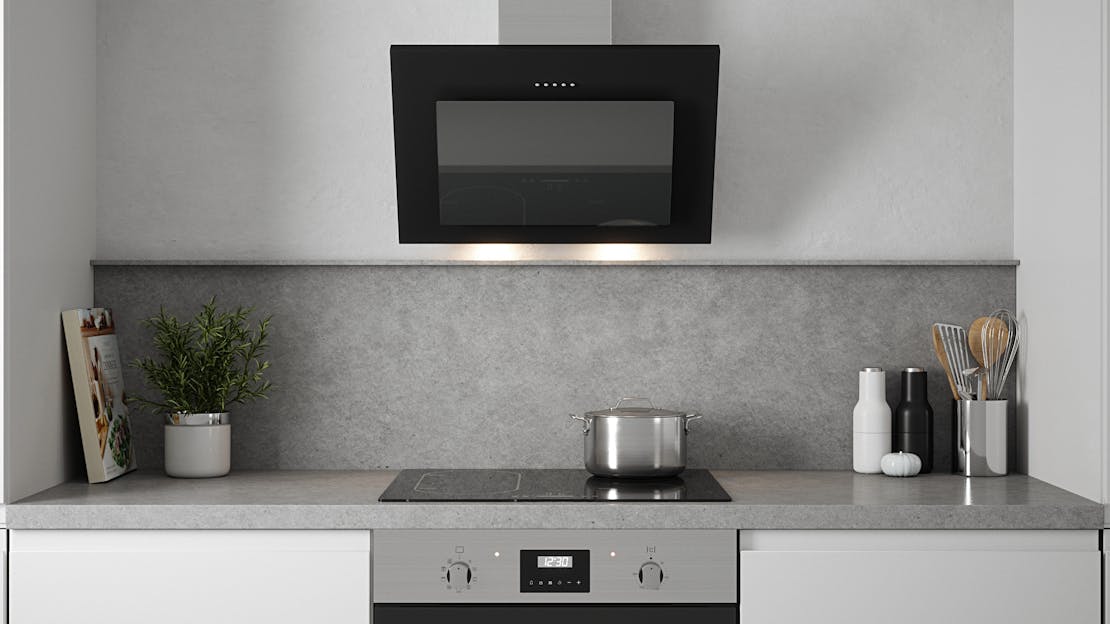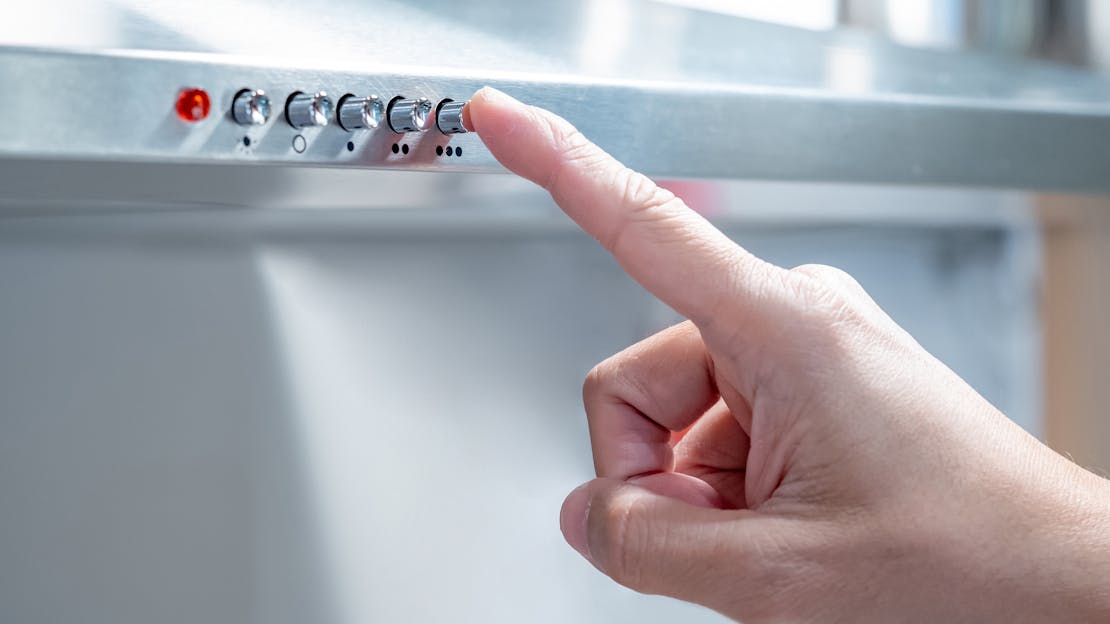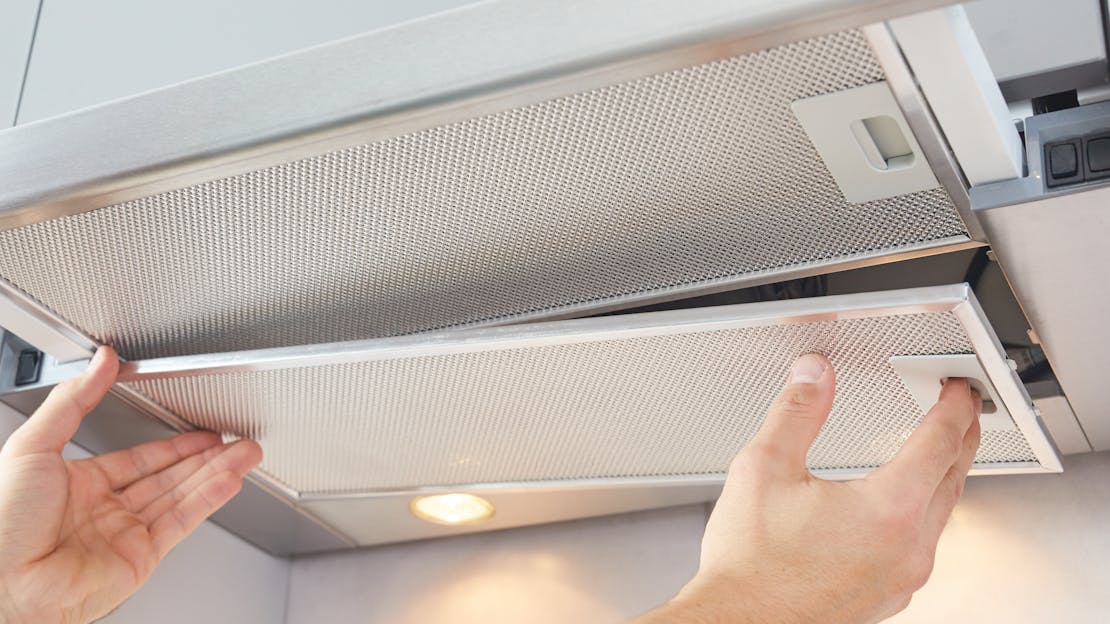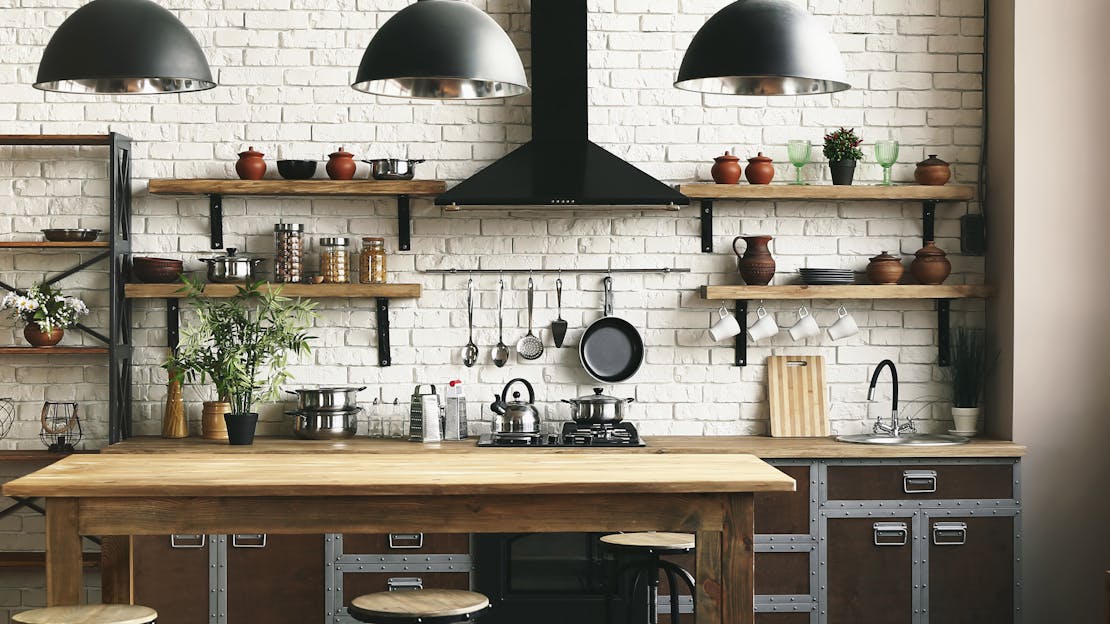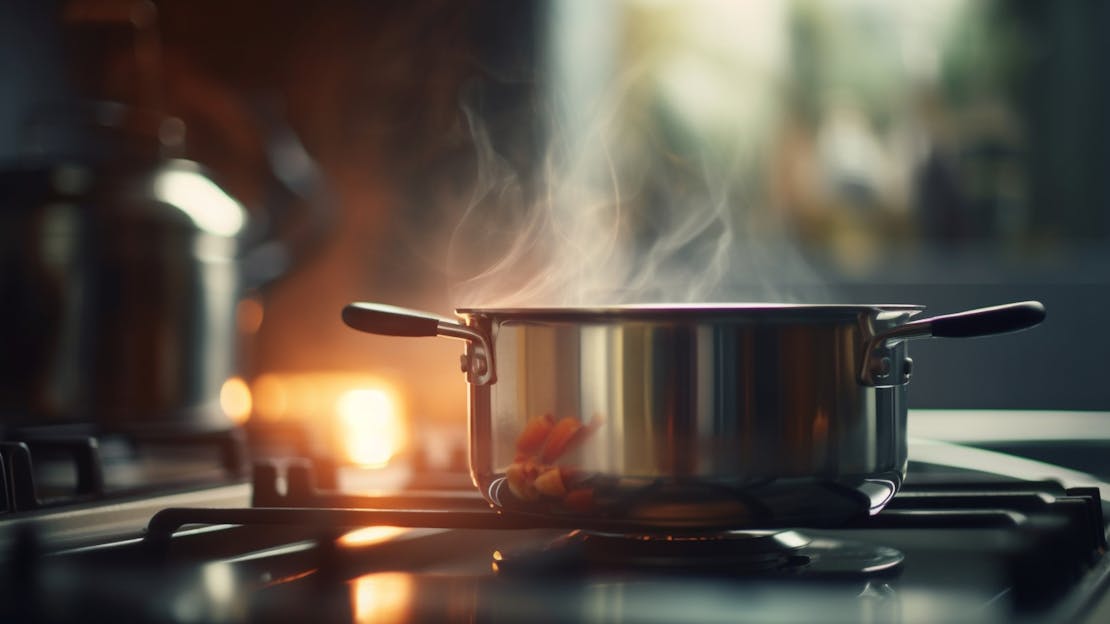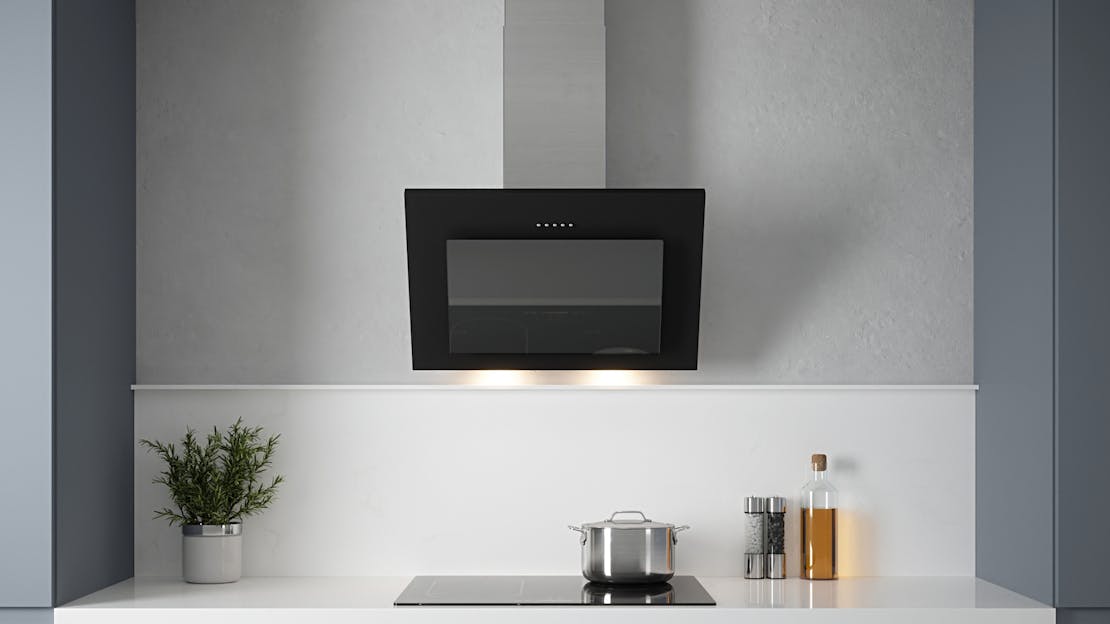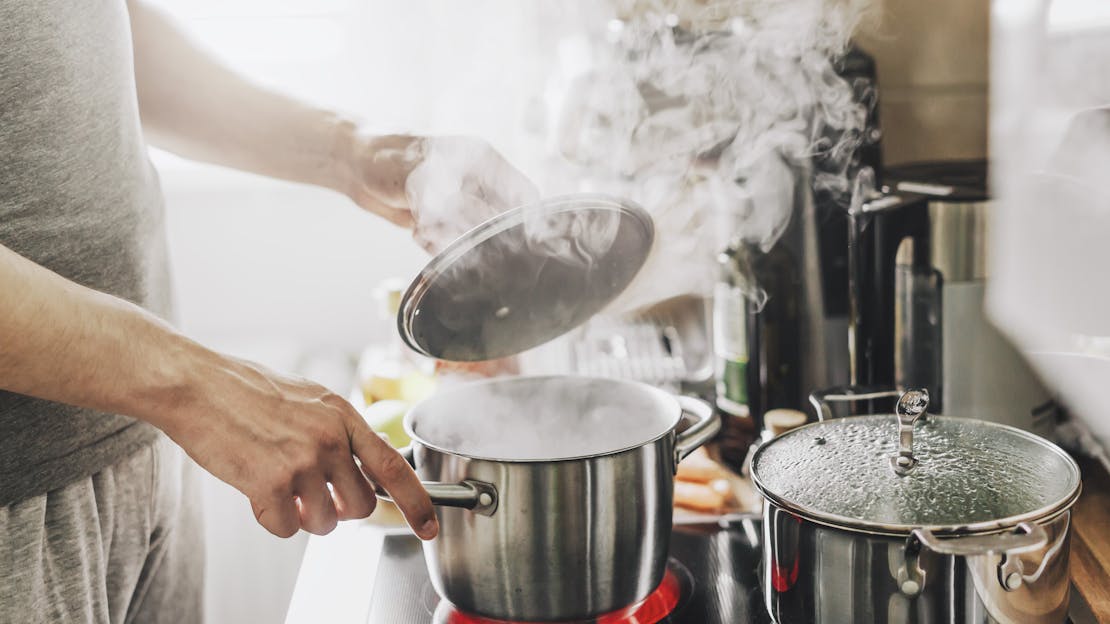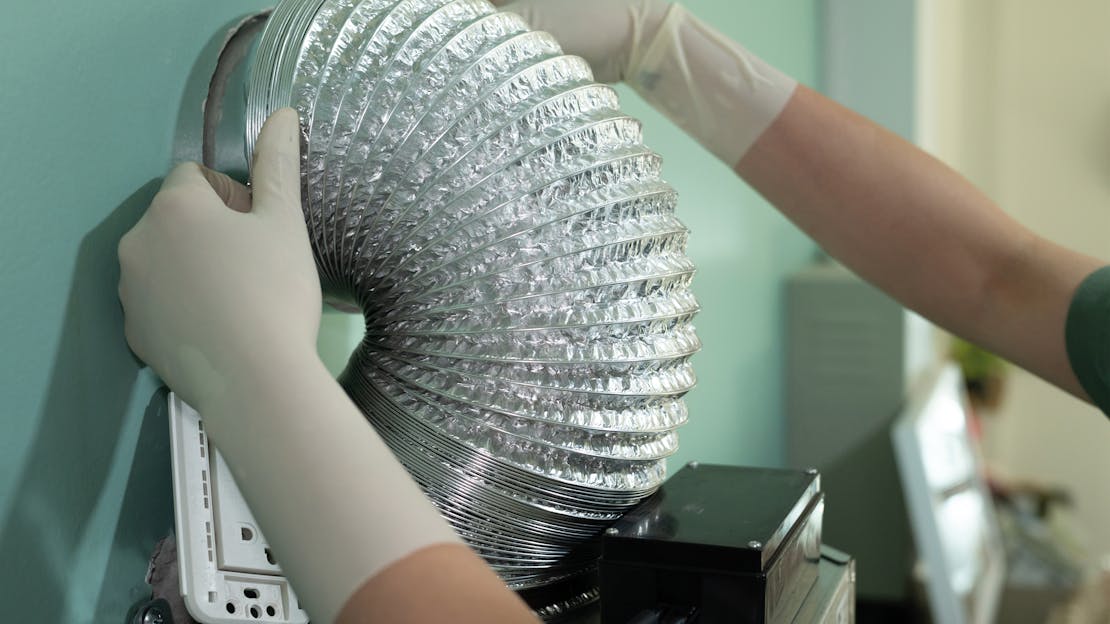
What is the difference between vented and recirculating cooker hoods?
Vented and recirculating cooker hoods, also known as extractor hoods or range hoods, serve the same fundamental purpose in a kitchen: they help to remove smoke, odours, grease, and airborne particles generated during cooking. However, they achieve this goal through different methods, and each has its own advantages and disadvantages. Let's explore the key differences between vented and recirculating cooker hoods in detail:
Exhaust Mechanism:
Vented Hood: A vented hood expels air outside the kitchen through a duct or pipe. It captures cooking by-products and releases them outdoors, effectively removing odours, smoke, and grease from the cooking area.
Recirculating Hood: A recirculating hood filters the air through various filters (typically activated charcoal or carbon filters) and then releases the cleaned air back into the kitchen. It does not exhaust air outside but recirculates it after purification.
-
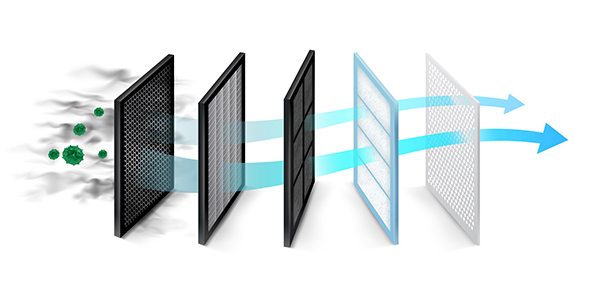
Installation and Ducting:
Vented Hood: Vented hoods require a duct or ventilation system that connects to an external wall or roof. This means installation can be more complex, and you need a clear path to the outside for the duct.
Recirculating Hood: Recirculating hoods are easier to install because they don't require ductwork to the exterior. They can be placed anywhere in the kitchen, making them more flexible in terms of positioning.
Efficiency:
Vented Hood: Vented hoods are generally more efficient at removing cooking odours, smoke, and grease because they expel the polluted air outside. They are particularly effective in homes with heavy cooking or professional kitchens.
Recirculating Hood: Recirculating hoods are less efficient than vented hoods because they only filter and recirculate air within the kitchen. They may not be as effective at completely eliminating cooking odours and may require more frequent filter replacement.
Maintenance:
Vented Hood: Vented hoods require less frequent maintenance in terms of filter replacement because they do not filter air directly. However, the ductwork may require occasional cleaning.
Recirculating Hood: Recirculating hoods require regular filter replacement or cleaning to maintain their effectiveness. The frequency of filter replacement depends on how often you cook and the type of filters used.
Cost:
Vented Hood: The initial cost of a vented hood may be higher due to the installation of ductwork, but it can lead to lower operating costs in the long run.
Recirculating Hood: Recirculating hoods are usually more affordable upfront because they do not require ducting. However, they may have higher ongoing filter replacement costs.
Environmental Impact:
Vented Hood: Vented hoods are more environmentally friendly since they expel cooking pollutants outside, rather than filtering and recirculating them within the home.
Recirculating Hood: Recirculating hoods may be considered less environmentally friendly because they do not remove cooking pollutants from the indoor air.
The choice between a vented and recirculating cooker hood depends on your specific needs, kitchen layout, and priorities. Vented hoods are generally more effective and suitable for heavy cooking, while recirculating hoods are easier to install and more versatile in terms of placement. Consider factors such as your cooking habits, budget, and environmental concerns when making your decision.
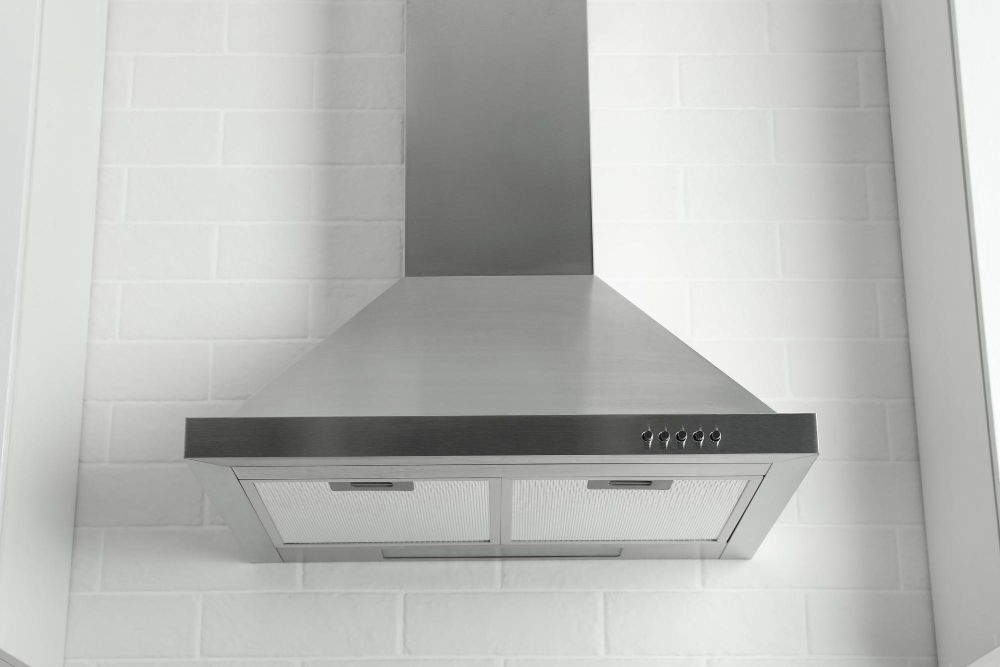
What are the pros and cons of recirculation cooker hoods?
Pros of Recirculation Cooker Hoods:
Ease of Installation: Recirculation cooker hoods are relatively straightforward to install because they don't require external ductwork. This makes them a suitable choice for kitchens where installing ducts to the outside is not feasible due to structural constraints or budget limitations.
Flexible Placement: You can position recirculation cooker hoods in various locations within the kitchen, offering versatility in optimizing their effectiveness at capturing cooking fumes and odours.
Energy Efficiency: Compared to vented hoods, recirculation cooker hoods are more energy-efficient because they don't expel heated or cooled indoor air to the outside. This helps maintain a comfortable indoor temperature and can lead to savings on heating or cooling costs.
No Outdoor Air Exchange: In some regions with extreme weather conditions, vented hoods can cause indoor temperature fluctuations by drawing in outdoor air. Recirculation hoods avoid this issue as they do not exchange air with the outside environment.
Cons of Recirculation Cooker Hoods:
Reduced Effectiveness: Recirculation cooker hoods are generally less effective at removing cooking odours, smoke, and grease when compared to vented hoods. They filter and recirculate air within the kitchen, which means that some pollutants may not be completely eliminated.
Regular Filter Maintenance: Maintaining recirculation hoods requires regular filter replacement or cleaning. The frequency of maintenance depends on your cooking frequency and the type of filters used. Neglecting this maintenance can lead to decreased performance.
Higher Long-Term Costs: While recirculation cooker hoods may have lower initial installation costs, they often have higher long-term operating costs due to filter replacement expenses. In contrast, vented hoods do not necessitate frequent filter replacements.
Environmental Impact: Recirculating hoods may be considered less environmentally friendly because they do not remove cooking pollutants from the indoor air. This can result in an accumulation of indoor pollutants over time.
Limited Odour and Smoke Removal: Recirculating hoods are less effective at removing strong cooking odours and smoke, particularly in kitchens with heavy cooking activity. Some residual odours and smoke may linger in the kitchen.
Recirculation cooker hoods offer convenience for kitchens where external ducting is impractical, or where ease of installation and energy efficiency are priorities. However, they may not be as effective as vented hoods in completely eliminating cooking odours, smoke, and grease, and they require regular filter maintenance. Your choice should depend on your specific needs, budget, and the level of cooking activity in your kitchen.
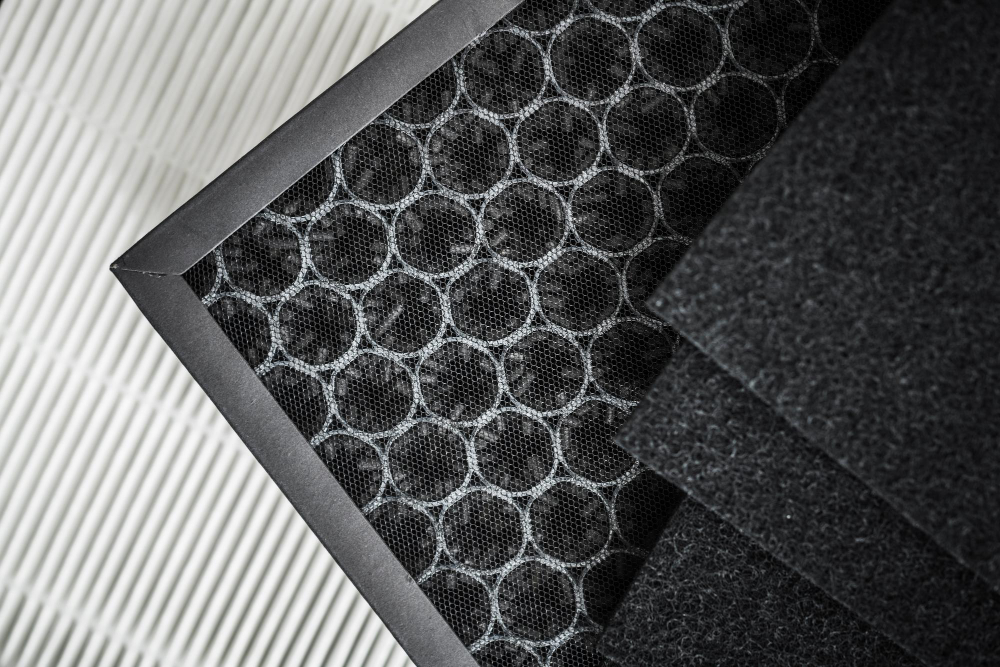
What are the pros and cons of vented cooker hoods?
Pros of Vented Cooker Hoods:
Efficient Smoke and Odour Removal: Vented cooker hoods are highly effective at removing cooking smoke, odours, and grease from the kitchen. They expel polluted air outside, ensuring a fresher and cleaner indoor environment.
Ideal for Heavy Cooking: Vented hoods are well-suited for kitchens with substantial cooking activity, such as frying and grilling, as they effectively capture and exhaust cooking by-products.
Low Ongoing Maintenance: Vented hoods typically require less ongoing maintenance compared to recirculating hoods. They do not have filters that need regular replacement or cleaning, reducing long-term operating costs.
Environmental Benefits: Vented hoods are considered more environmentally friendly because they do not recirculate indoor air pollutants. They expel cooking pollutants outside, contributing to better indoor air quality.
Cons of Vented Cooker Hoods:
Complex Installation: Installing a vented cooker hood can be more challenging and costly than installing a recirculating hood. It requires ductwork to be routed to an external wall or roof, which may not always be feasible or straightforward.
Limited Placement Options: The installation of vented hoods is restricted by the need for ducting to the outside. This limits placement options and may require adjustments to kitchen layouts.
Potential Temperature Fluctuations: In regions with extreme weather conditions, vented hoods can cause indoor temperature fluctuations by drawing in outdoor air. This can affect heating and cooling efficiency.
Higher Initial Cost: The initial cost of purchasing and installing a vented hood may be higher compared to a recirculating hood, primarily due to the ductwork and installation expenses.
Not Suitable for All Kitchens: Vented hoods are not suitable for every kitchen, especially in situations where it's challenging to install ductwork or where the kitchen layout does not allow for external venting.
Vented cooker hoods are highly effective at removing cooking smoke, odours, and grease, making them ideal for kitchens with substantial cooking activity. They have lower ongoing maintenance requirements and are more environmentally friendly. However, they may involve a more complex and costly installation process, limit placement options, and could potentially cause indoor temperature fluctuations in extreme weather conditions. Your choice of hood should depend on your specific kitchen setup, cooking habits, and budget considerations.
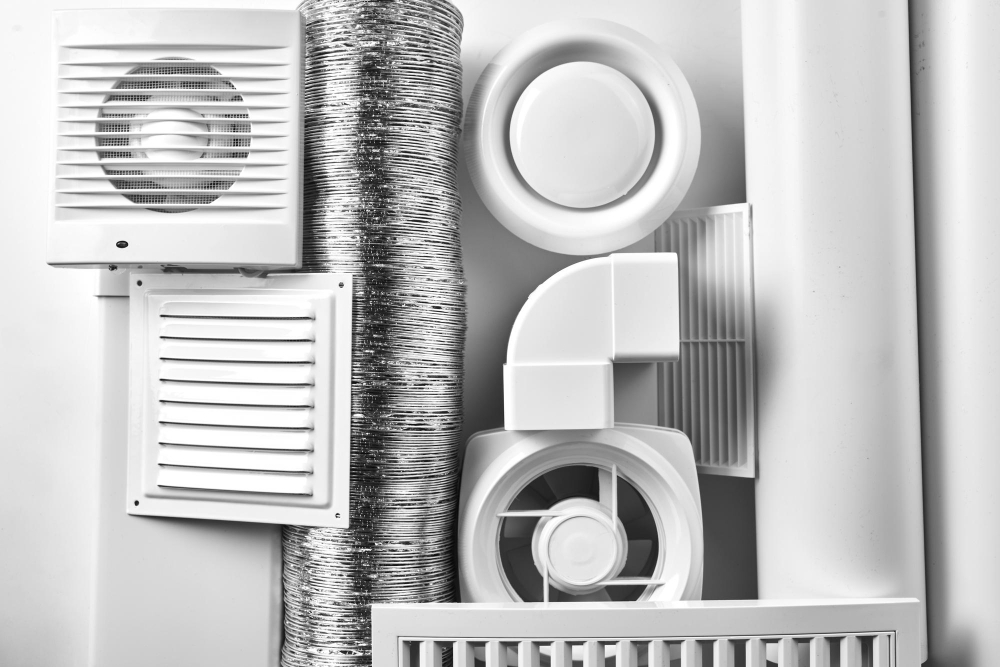
In summary
Here is a table summarising the main differences between vented and recirculating cooker hoods:
| Aspect | Vented Cooker Hood | Recirculating Cooker Hood |
|---|---|---|
| Efficient Smoke and Odour Removal | Highly effective at removing cooking smoke, odours, and grease by expelling polluted air outside. | Less effective at fully eliminating cooking odours, smoke, and grease as they recirculate air within the kitchen. |
| Ideal for Heavy Cooking | Well-suited for kitchens with substantial cooking activity, such as frying and grilling. | Suitable for moderate cooking but may struggle with heavy-duty cooking by-products. |
| Low Ongoing Maintenance | Requires less ongoing maintenance as it lacks filters that need regular replacement or cleaning. | Demands regular filter replacement or cleaning to maintain effectiveness. |
| Environmental Benefits | Considered more environmentally friendly as they do not recirculate indoor air pollutants. | May be less environmentally friendly as they don't remove cooking pollutants from indoor air. |
| Installation Complexity | Installation can be more complex and costly due to the need for ductwork to expel air outside. | Easier installation, suitable for kitchens where ducting is impractical. |
| Placement Flexibility | Placement is limited to areas where ducting can be routed to the exterior, potentially affecting kitchen layout. | More flexible placement options within the kitchen. |
| Potential Temperature Fluctuations | In regions with extreme weather conditions, may cause indoor temperature fluctuations by drawing in outdoor air. | Avoids indoor temperature fluctuations as it does not exchange air with the outside environment. |
| Initial Cost | Higher initial cost due to ductwork and installation expenses. | Lower initial cost, making it more budget-friendly upfront. |
| Suitability for All Kitchens | Not suitable for kitchens where installing ductwork is challenging or impossible. | Suitable for various kitchen setups, especially where ducting is impractical. |
Frequently asked questions
How do I know if my cooker hood is extraction or recirculation?
Are recirculating cooker hoods effective?
What is the difference between cooker hood recycling and ventilation?
Do recirculating cooker hoods remove steam?
Do recirculating hoods remove moisture?
Which type of cooker hood is better?
Does a recirculating cooker hood meet building regulations?
How do you clean a recirculating cooker hood?
How long do carbon filters last in cooker hood?
Everything you need to know about Cooker Hoods
Everything you need to know about Cooker Hoods
Cooker hoods are essential kitchen appliances that combine functionality with style. These sleek units efficiently remove cooking odors and grease from the air, ensuring a fresh and clean kitchen environment. Explore our collection of articles to discover how cooker hoods can enhance your cooking space with their effective ventilation and modern designs.
-
From understanding the different types and features to exploring installation options and maintenance tips, this comprehensive guide will equip you with the knowledge to transform your kitchen into a truly captivating and odour-free haven.
-
Within this comprehensive guide, we will delve into the various types, features, installation options, and maintenance tips for integrated cooker hoods, enabling you to make an informed choice and enhance your kitchen into a fresher, more enjoyable environment.
-
In this comprehensive guide, we will delve into the importance of proper kitchen ventilation and provide you with all the essential information you need to create a clean, comfortable, and healthy cooking environment.
-
In this article, we’ll explore the best ways to keep your cooker hood clean, including what cleaner to use, what cloth to use, how to keep on top of dust, how to clean the filters, and how to stop fingerprints on stainless steel hoods.
-
Vented and recirculating cooker hoods serve the same fundamental purpose in a kitchen: they help to remove smoke, odours, grease, and airborne particles generated during cooking. However, they achieve this goal through different methods, and each has its own advantages and disadvantages. In this article we explore the key differences between vented and recirculating cooker hoods.
-
Whether you're an enthusiastic cook or someone seeking a quieter kitchen, this guide provides valuable insights into reducing cooker hood noise. We'll delve into the underlying factors causing the disturbance and provide practical solutions, including routine maintenance and advanced soundproofing techniques, allowing you to transform your kitchen into a tranquil culinary haven. Say goodbye to the clamour and embrace a quieter, more enjoyable cooking experience.
-
Cooker hoods are essential appliances in kitchens designed to improve air quality and remove various airborne contaminants, odours, and pollutants generated during cooking. They play a crucial role in maintaining a clean, healthy, and comfortable kitchen environment. In this guide we will cover exactly what cooker hoods do.
-
There are some general guidelines that you should follow when installing or using a cooker hood. These guidelines are designed to ensure that your cooker hood is safe and effective.
-
Determining the right size cooker hood is crucial to ensure efficient smoke and odour extraction, creating a clean and comfortable cooking environment. In this guide, we will walk you through the considerations and steps involved in selecting the ideal size cooker hood that suits your specific requirements. Let's dive in and find the perfect match for your kitchen!
-
With so many different types of cooker hood styles available, it can be difficult to know which one is right for your kitchen. In this article, we’ll explore the different types of cooker hood styles available, including downdraft cooker hoods, island hoods, visor hoods, and integrated hoods. We’ll also explain why it’s worth paying extra for a designer hood, and what the different shapes of cooker hood mean.
-
Maintaining a cooker hood requires minimal effort, primarily focusing on the regular cleaning or replacement of the cooker hood filter. This simple maintenance task ensures optimal performance and effectiveness of your cooker hood in removing smoke, odours, and grease particles from your kitchen.
-
Join us on this journey as we explore the world of cooker hoods, unravel the mysteries of extraction power and filtration systems, and uncover the secrets to finding a cooker hood that seamlessly integrates into your kitchen's design while efficiently clearing the air of unwanted impurities.
-
In this article, we’ll explore some of our key features, including quiet hoods, energy-efficient hoods, types of controls, boost function, timer, and peripheral aspiration.
-
Cooker hoods might seem like one of those kitchen components that's just there. You notice it when it's too loud or if it doesn't do its job properly. But, in fact, the right cooker hood can be a silent hero in your culinary space. Let's get straight into figuring out the right one for you.
-
Selecting the right cooker hood is just one piece of the puzzle; positioning it correctly is equally vital. The height at which the hood is placed above your cooker can influence its effectiveness, safety, and the overall aesthetics of your kitchen. Let's delve into the optimal heights and the factors affecting this crucial decision.
-
When choosing a cooker hood, one of the most important factors to consider is the extraction rate. However, this term can be confusing for many consumers. In this article, we’ll explain what the extraction rate is and how it’s calculated, so you can choose the right cooker hood for your kitchen with confidence.
-
Ventilation matters more than you might think in your kitchen, and that's where cooker hoods come in. Our Cooker Hoods FAQ will help you understand the importance of these essential appliances. From removing cooking odours and improving air quality to selecting the right type of hood for your kitchen layout, we'll address your questions and concerns about cooker hoods to ensure your cooking space remains fresh and comfortable.
-
This article delves into the causes of condensation during cooking and provides a comprehensive guide to mitigating its effects.

